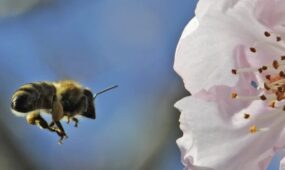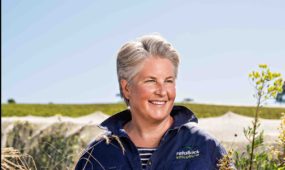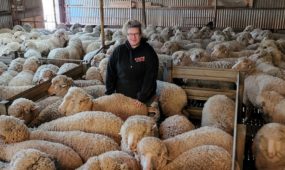South Australian research centre "20 years ahead" in water conservation
Primary Industries
SOUTH Australia’s Riverland is an iconic tourist destination, but recreation is not the main attraction for a growing cohort of international visitors.

Sign up to receive notifications about new stories in this category.
Thank you for subscribing to story notifications.
They head home – whether to Africa, Asia or the Middle East – with new ideas (and maybe a few photos) for applying advanced irrigation technologies, processes and policies to improve water management and water-use efficiency.
And the region’s appeal is about to get even greater following a State Government decision to invest $7.5 million to redevelop the Loxton Research Centre.
The Adelaide-based International Centre of Excellence in Water Resources Management (ICE WaRM) announced this week that it will use the Loxton facility as the hub for expanding its national and international training programs in the region.
It will carry out more course components in Loxton and look to develop a new range of offerings.
ICE WaRM currently brings up to 10 delegations a year to the Riverland (about 255 kilometres north-east of Adelaide) to see technology and techniques that CEO Richard Hopkins says are “20 years ahead of the pack”.
“We take them elsewhere in Australia and show them how channel systems are being improved and that’s very impressive but also familiar to most of them – they’ve got open channel systems,” he said.
“We then take them to the Riverland, where the channels have been replaced by pipe systems delivering water at pressure to the farm gate. It’s very high tech and very efficient; not just delivery of water but monitoring of soil moisture, connecting the systems and related data management.
“It’s a real eye opener. They just can’t believe it.”
Hopkins said the Riverland’s expertise had developed because of the practical imperative “to do more with less”.
The upgrading of the irrigation systems had been implemented with government support, but this had stimulated huge investments on property as well. Farmers had upgraded their systems and implemented new ideas, largely at their own expense.
There were similar irrigation development overseas (often well publicised) but these were on a small-scale compared with what had been achieved in the Riverland.
ICE WaRM has brought three delegations to South Australia so far this year – two from India and the most recent from around the Zambesi Basin in southern Africa. Visitors regularly come from Iraq, Saudi Arabia, China’s Yellow River region, Indonesia and the countries that rely heavily on the Mekong River.
Each year brings half a dozen high-level delegations of Ministers and senior bureaucrats and 3-4 of mid-career water industry professionals who will spend up to two months in Australia.
All are exposed to much more than just technology.
Hopkins said ICE WaRM followed a broader agenda because “there are a lot of things that need to be in place for things to happen and produce efficiencies”.
It was common for developing countries to get access to technology through international development assistance but then struggle to use it effectively because of a lack of experience and complementary policies and practices.
“So we might talk about issues such as water trading and value of water and then say ‘if you follow those processes it will allow individuals to make their own decisions about how to use water more efficiently’,” he said.
ICE WaRM was established in 2004 as a national consortium of leading research and education providers. South Australia’s three universities are all founding shareholders, and the South Australian Research & Development Institute (SARDI) is a supporter.
Jump to next article



